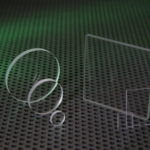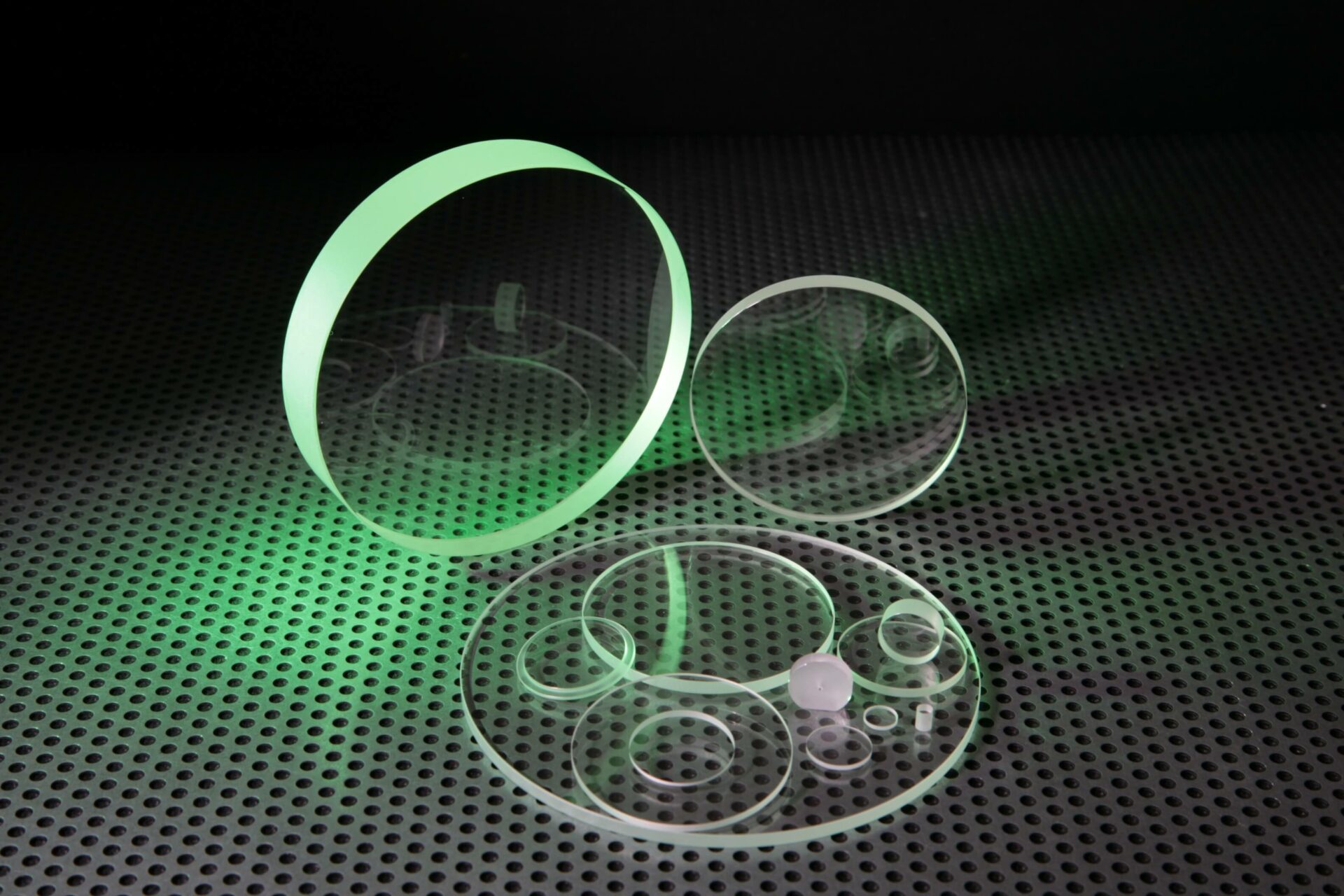Sapphire is an extremely hard crystal and the hardest oxide material, offering excellent structural properties and resistance to scratching.
Sapphire exhibits excellent transmission in the UV, visible and near IR spectrum, with a transmission range from 0.2 – 5.5μm. (200nm to 5500nm).
As an optical material, sapphire provides excellent thermal conductivity even at low temperatures.
This means it can be used for many industrial optical applications and fields where thermal conductivity and heat radiation are required. Sapphire Windows are ideal for demanding applications requiring:
- Operational effectiveness at temperatures of up to 2,030 degrees Celsius
- Resistance to aggressive acids and alkalis up to 1,000 degrees Celsius
- Complete resistance to weathering and hydration
- Extreme surface hardness.
Key properties of Sapphire

Sapphire windows and lenses offer a number of advantages over other glass optics.
For example, compared to optical components manufactured from fused silica and fused quartz, optical components made from sapphire offer superior performance and durability, within sapphire’s transmission range of 190nm to 5000nm.
For industrial optics purposes, sapphire is manufactured synthetically which means it is free of the potential flaws and impurities which characterise the naturally occurring crystal.
Properties of sapphire include:
- Extreme surface hardness and resistance to scratching (second only to diamond)
- High strength and structural integrity compared to other optical materials
- Excellent optical transmission with wide spectrum from UV to mid IR
- Chemically inert and resistant to aggressive chemicals other than caustic salts
- Excellent thermal conductivity
- Excellent heat resistance and extremely high melting point
- High resistance to corrosion and abrasion
- Excellent electrical characteristics (high electrical resistance, high dielectric coefficient).
What is Sapphire used for?
Sapphire is an excellent optical material when used in the manufacture of optical windows, Plates, substrates and lenses in UV and IR applications over a wide spectrum of wavelengths.
It is also ideal for optics windows due to its thermal and chemical characteristics which mean even when exposed to extreme temperatures it can transmit high powered UV, visible and IR over long periods.
Practical applications of sapphire optics include:
- Industrial: UV, visible and IR sensors, detectors, pressure windows, sight windows for industrial furnaces and viewing ports,
- Scientific: research, medical and dental tools
- Oil and gas: lenses and windows for exploration and detection
- Military: protection for sensors, cameras and lasers against extreme air, water, and ground conditions
- Medical: various applications from skin contact windows, hair removal lasers, pharmaceutical monitoring, and endoscopy
- High pressure environments: deep sea and high vacuum chamber cameras or lasers.
Sapphire from UQG Optics
UQG Optics sapphire windows are manufactured in a random or specified orientation.

Our Sapphire windows are extremely hard and scratch resistant, and useful for their (UV) ultraviolet, (VIS) visible and (IR) infrared transmission.
Our sapphire optical components are available in a wide range of sizes and orientations:
- Sapphire windows (plain, coated one side or coated both sides)
- Sapphire windows – ‘C’ axis
- Sapphire step windows
- Sapphire microscope slides
- Sapphire coverslips
- Sapphire plates – ‘C’ axis
Download UQG’s Sapphire material datasheet
UQG Optics stock sapphire windows and plates in a range of sizes with the option to custom make to a desired specification including AR coatings.
| Custom sizes | Available on request |
| Diameters | 1.0mm to 230mm |
| Square / rectangle | 2mm to 210mm |
| Thickness | To 25.0mm |
Next Steps
To find out more about Sapphire Windows from UQG Optics, or any of our other optical windows call us on 01223 420329 or email our sales team at info@uqgoptics.com




